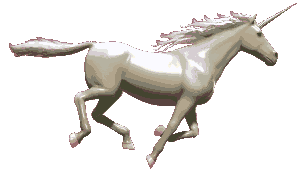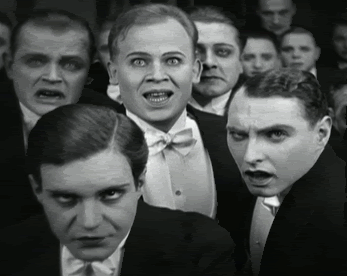RAWTunes.exe 10.4.2
Yes me, a music single.
It’s 79p / 99c on iTunes:
RAWTunes.exe 10.4.2
RAWTunes.exe 10.4.2 by therourke
But is it noise-art or just digital sinister?
Thoughts on art practice PhDs
“Knowledge is and will be produced in order to be sold, it is and will be consumed in order to be valorised in a new production: in both cases, the goal is exchange.”
– Jean-Francois Lyotard, The Postmodern Condition
What are artists to gain from taking a PhD? How does the mantle of ‘artistic research’ enable art objects and those invested in them? And where does art’s autonomy reside when its criticality comes from within an academic institution?
 Over the last 20 years art has eased its way into academia. Past the door of the artist’s studio and up the back stairs it tiptoed until, in a very bold move, it seated itself in the commissioner’s chair. Where once art reacted against academies from the outside, art, and the artists who make it, now work from within the institution. Artists interested in pursuing a doctoral degree will have heard time and again about ‘the critical function of art’. Indeed, many theorists would insist on art being defined from this state of opposition (the ‘avant-garde’). But to understand the potential of art today it becomes impossible to separate it from the academic institutions that use its name to label their distinctive, often daring, new departments. Goldsmith’s Art Writing MFA and the RCA’s Critical Writing in Art & Design being two of the freshest – some might say hippest – examples.
Over the last 20 years art has eased its way into academia. Past the door of the artist’s studio and up the back stairs it tiptoed until, in a very bold move, it seated itself in the commissioner’s chair. Where once art reacted against academies from the outside, art, and the artists who make it, now work from within the institution. Artists interested in pursuing a doctoral degree will have heard time and again about ‘the critical function of art’. Indeed, many theorists would insist on art being defined from this state of opposition (the ‘avant-garde’). But to understand the potential of art today it becomes impossible to separate it from the academic institutions that use its name to label their distinctive, often daring, new departments. Goldsmith’s Art Writing MFA and the RCA’s Critical Writing in Art & Design being two of the freshest – some might say hippest – examples.
“EveryThing on the Face of the Earth”
This reflection on John Carpenter’s The Thing, is an update to a piece I wrote for 3quarksdaily some time ago:
– And Another ‘Thing’ : Sci-Fi Truths and Nature’s Errors
I re-visit the subject here with the intention of binding together two other posts of mine:
– The Doctrine of the Similar (GIF, GIF, GIF)
– Digital Autonomy: A Response to Hito Steyerl
UPDATE: Having just read ‘The Things‘, a short story written by Peter Watts, I wanted to share it. Text and audio versions can be found online, courtesy of Clarkesworld Magazine. Really stunning read for Thing lovers everywhere.
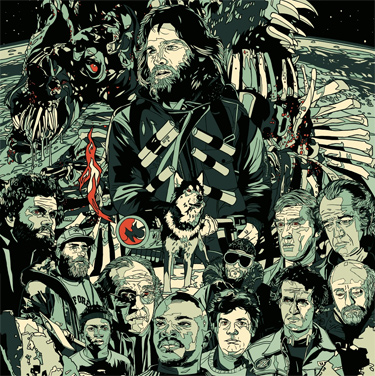 John Carpenter’s 1982 film, The Thing, is a claustrophobic sci-fi masterpiece, containing all the hallmarks of a great horror film. The film depicts a sinister turn for matter, where the chaos of the replicating, cancerous cell is expanded to the human scale and beyond. In The Thing we watch as an alien force terrorises an isolated Antarctic outpost. The creature exhibits an awesome ability to imitate, devouring any creature it comes across before giving birth to an exact copy in a burst of blood and protoplasm. The thing copies cell by cell and its process is so perfect – at every level of replication – that the resultant simulacrum speaks, acts and even thinks like the original. The thing is so relentless, its copies so perfect, that the outpost’s Doctor is sent mad at the implications:
John Carpenter’s 1982 film, The Thing, is a claustrophobic sci-fi masterpiece, containing all the hallmarks of a great horror film. The film depicts a sinister turn for matter, where the chaos of the replicating, cancerous cell is expanded to the human scale and beyond. In The Thing we watch as an alien force terrorises an isolated Antarctic outpost. The creature exhibits an awesome ability to imitate, devouring any creature it comes across before giving birth to an exact copy in a burst of blood and protoplasm. The thing copies cell by cell and its process is so perfect – at every level of replication – that the resultant simulacrum speaks, acts and even thinks like the original. The thing is so relentless, its copies so perfect, that the outpost’s Doctor is sent mad at the implications:
Blair: If a cell gets out it could imitate everything on the face of the Earth… and it’s not gonna stop!!![1]
The seeming perfection of the thing’s replication process goes far deeper than mere imitation. Earthly, organic life is a nature of disruption – a discursive, discontinuous magisteria. Error is usually understood as that which impedes on a normalcy, disrupting its order. But as the history of the sciences shows the error of life is an error intimate to its specificity. Michel Foucault’s interest in the work of Georges Canguillhem, the grand expositor of biological disease and disorder, bears a striking similarity to Hito Steyerl’s interest in digital images. Foucault sees in Canguillhem’s work on disease a self-sustaining paradigm of scientific principles, where error “is eliminated not by the blunt force of a truth that would gradually emerge from the shadows but [at all stages] by the formation of a new way of ‘truth-telling’”.[2] This epistemology of science as productive failure is further aligned with the status of the biological systems Canguillhem studied. Foucault, from his essay Life: Experience and Science:
“At the center of these problems one finds that of error. For, at the most basic level of life, the processes of coding and decoding give way to a chance occurence that, before becoming a disease, a deficiency, or a monstrosity, is something like a disturbance in the informative system, something like a ‘mistake’. In this sense, life – and this is its radical feature – is that which is capable of error…”[3]
Pathological disease constitutes a better model of the Earthly organism than the normalcy, the magisteria of The Thing. But in the film The Thing, the alien entity becomes an external imposition on the entire ‘magisteria’ of Earthly nature. The perfection of the thing is utterly alien to Earthly nature, because it is both perfect and absolutely other. If, as Foucault suggests, life is error, then the characters in The Thing are torn between two equally horrifying worlds. In one, the alien thing aims for perfection, cloning its hosts cell by cell until, like The Ship of Argo, an entirely new, but identical world remains. In the other, the beauty of nature, in all its intricacy, is the result of a billion years of ugly mutation. Is it perhaps too much of a liberty to suggest that the thing’s most terrifying, absolute alien quality, comes from its inability to err? As the creature tears through every organism in sight its eventual perfection is hidden behind the veil of blood, guts and mutating body parts more readily associated with imperfection. But these depictions of cruel, cancerous blobs and swelling sacks of gaseous, oozing human matter are actually manifestations of a perfection being perfected; a process with one outcome: absolute substitution. The error of Earthly life, its ability to err, represents its most beautiful capacity, to change by mutation and pass those mutations on to the next generation, ad infinitum.[4] The thing, in opposition to this, can only become its other absolutely. There is no room for error, for mutation, for change or evolution. The thing is destined to be “everything on the face of the Earth”. Its magisteria is terrible because were it to ‘replace’ the Earthly magisteria all the beauty of error would be gone. Thus we find a contradiction. Because so far I have insisted on the absolute replication of the Earthly by the thing-ly. But as the Earthly magisteria ‘becomes’ the thingly magisteria, the ability to err is removed, and thus, by turns, there has been no absolute replication at all. Error got missed out because of perfection. The original is flowing, dynamic, imperfect. The simulacrum is static, stable, unchanging; eternal. The Thing, then, as a singular, isolated spectacle of closure, brings into question Friedrich Kittler’s exclamation that:
“…nature is not a computer… therefore, a number of highly complex human phenomena, by their very nature, fall outside the scope of the current processing paradigms. This is, in fact, the only rational hope I have that we have not arrived at the end of history.”[5]
Digital Autonomy
This essay was originally written as a response to a symposium held at Goldsmiths, Uni of London, in June 2011, entitled: New Notes on Sculpture
“Is an ephemeral image, a moment in a streaming video, a thing? Or if the image is frozen as a still, is it now a thing? Is a dream, a city, a sensation, a derivative, an ideology, a decay, a kiss? I haven’t the least idea.”
Extract from David Miller, Materiality: An Introduction
In A Thing Like You and Me, Hito Steyerl plays out her ongoing obsession with the copy, skirting briefly over her wider, yet more implicit concern: the digital. Echoing the work of Bruno Latour, Steyerl acknowledges the materiality by which images are created, scarred and destroyed in order to get to a much deeper, ontological question about autonomy. Avoiding the kind of subject/object purification Latour warns about, Steyerl asks us to consider images as something we can participate in, even model our autonomy on. Is it possible to become a thing? And where does Hito Steyerl get off calling us ‘things’ in the first place?
For Latour things cannot be understood in a pure form, material or otherwise. To understand a JPEG means also understanding personal computers, digital economies, carefully programmed image compression software and the relations which connect them:
“…as soon as we are on the trail of some quasi-object, it appears to us sometimes as a thing, sometimes as a narrative, sometimes as a social bond, without ever being reduced to a mere being.” [2]
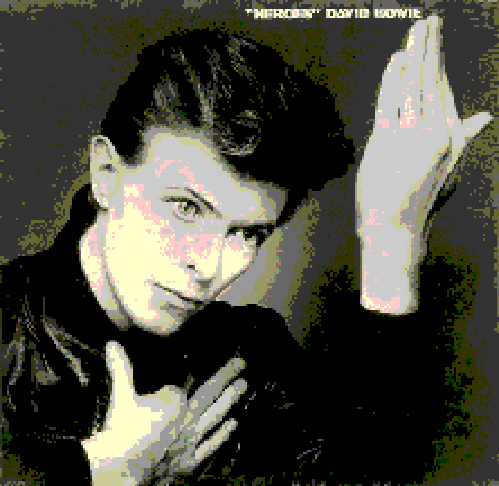 To map and follow these narratives and social bonds it becomes necessary to understand the history of actants and their relations without manipulating those histories into subject/object hierarchies themselves. Hito Steyerl begins with David Bowie’s pop-video Heroes: a highly produced moving-image made to re-present “three simultaneous angles” of the idealised proto-idol. In order to grant a condition of autonomy to the identity that results, Steyerl becomes more explicit:
To map and follow these narratives and social bonds it becomes necessary to understand the history of actants and their relations without manipulating those histories into subject/object hierarchies themselves. Hito Steyerl begins with David Bowie’s pop-video Heroes: a highly produced moving-image made to re-present “three simultaneous angles” of the idealised proto-idol. In order to grant a condition of autonomy to the identity that results, Steyerl becomes more explicit:
“…if identification is to go anywhere, it has to be with this material aspect of the image, with the image as thing, not as representation.” [3]
If we are to identify “with the image as thing”, whilst acknowledging the debt Steyerl’s account pays to Bruno Latour’s ‘object-oriented philosophy’, we must do two things. Firstly, we need to trace the materiality implicit in the technology of image reproduction which Hito Steyerl is interested in. Secondly, we need to isolate the kind(s) of autonomy those technologies are traditionally thought to (dis)allow and, in turn, determine whether Steyerl’s ‘thing-oriented’ participation is compatible with the definition of ‘image’ that results.
The Doctrine of the Similar (GIF GIF GIF)
UPDATE: Published in issue 3.1 of Dandelion Journal, on ‘Brevity’
In two short essays – written in 1933 – Walter Benjamin argues that primitive language emerged in magical correspondence with the world. The faculty we all exhibit in childhood play, to impersonate and imitate people and things loses its determining power as language gradually takes over from our “non-sensuous” connection with reality. In a break from Saussurian linguistics, Benjamin decries the loss of this “mimetic faculty”, as it becomes further replaced by the “archive of non-sensuous correspondences” we know as writing.
To put it in simpler terms… Where once we read the world, the stars or the entrails of a sacrificed animal, now we read the signs enabled and captured by written language.
From Benjamin’s The Doctrine of the Similar:
“So speed, the swiftness in reading or writing which can scarcely be separated from this process, would then become… the effort or gift of letting the mind participate in that measure of time in which similarities flash up fleetingly out of the stream of things only in order to become immediately engulfed again.”
The GIF – standing for Graphical Interchange Format – has been around since 1987. Their early popularity was based, in part, on their ability to load in time with a web-page. In the days of poor bandwidth and dial-up connections this meant that at least part of a GIF image would appear before the user’s connection broke, or – more significantly – the user could see enough of the image for it to make sense. In the mid 90s avid web hackers managed to crack the code of GIFs and use this ‘partial loading’ mechanism to encode animations within a single GIF file. Thus the era of personal web pages saturated with looping animations of spinning hamsters was born.
Brought on – ironically – by their obsolescence the GIF has become the medium of choice for web artists, propagating their particular net-aesthetic through this free, open and kitschy medium. GIFs inhabit the space between convenience and abundance, where an apparent breakdown in communication can stimulate new modes of expressing non-sensuous similarities in the internet world.
Sites like dump.fm, 4chan and ytmnd revel in the GIF’s ability to quickly correspond to the world. GIFs can be broken into their constituent frames, compressed and corrupted on purpose and made to act as archives for viral events travelling the web. A playground ofcorrespondences that at first reflected language and the wider world now looks increasingly inward. Finding meaning in the semiotic sludge of these GIFs requires a sensitivity to similitude bordering on the magical.
GIFs take a variety of forms, some of which I will try to classify here:
GIF Type I: Classic
Small in size and made up of few frames, this is where animated GIFs began. Corresponding to single words or concepts such as ‘smile’, ‘alien’ or ‘flying pink unicorn’.
GIF Type II: Frame Capture
Headless Research
This is an extract from a collaborative text I worked on, published in the June 2011 issue of Texte Zur Kunst :
The animal of research, being nourished from its root, springs up from the dirt of discourse, the direction of growth pandering to a supposed head. “Humans see the world through language, but do not see language.” 1 What exactly do the bees mean when they pollinate the blossom?
For art meaning tends to be expressed through images: copies long since removed in mimesis. “[W]ith man, life has led to a living being that is never completely in the right place…” 2 The capacity to expose or profane (to practice as one experiences) must then be removed from the intentions of the speaker, the writer or the artist. Meaning forms as much in the stutter, the slip-of-the-tongue, the teleological glitch and out-of-sync, as it does in the head. The mindless zombie cannot help but plod, gurgle and feast on living flesh. Its misdeeds constitute the normalcy to which its behaviour must be attributed. Foucault exclaims, “Life–and this is its radical feature–is that which is capable of error.” 3 The zombie cannot intend, but it is its inability to err that signifies it as headless.
Overlapping Magisteria
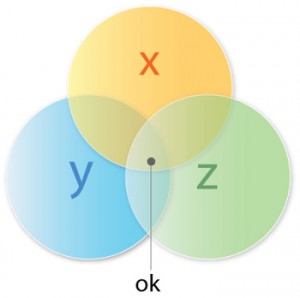 Rare as my blog posts have become, the desire to write – perhaps, the need to write – never wavers. With this in mind I plan to begin using my blog as it was intended: a space for (PhD) research to spill into. What follows then is a mixture of notes, mini-essays and un-finished sections from un-started chapters. I will use the tags on these posts as an archive of potential research pathways. (If you click them you’ll find out what that means.)
Rare as my blog posts have become, the desire to write – perhaps, the need to write – never wavers. With this in mind I plan to begin using my blog as it was intended: a space for (PhD) research to spill into. What follows then is a mixture of notes, mini-essays and un-finished sections from un-started chapters. I will use the tags on these posts as an archive of potential research pathways. (If you click them you’ll find out what that means.)
Your thoughts, as always, are supremely welcome.
To contact me real quick:  @therourke
@therourke



